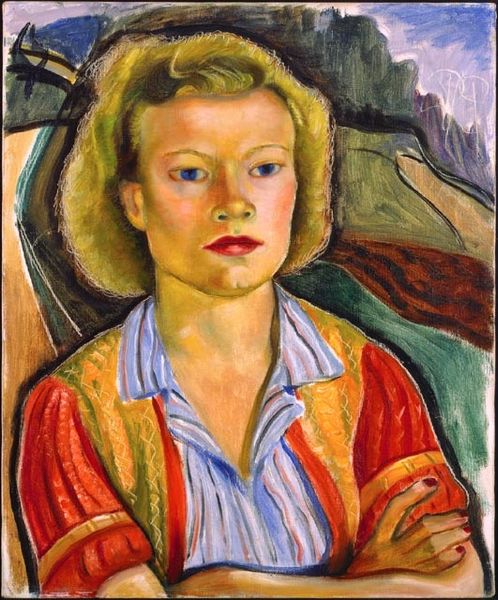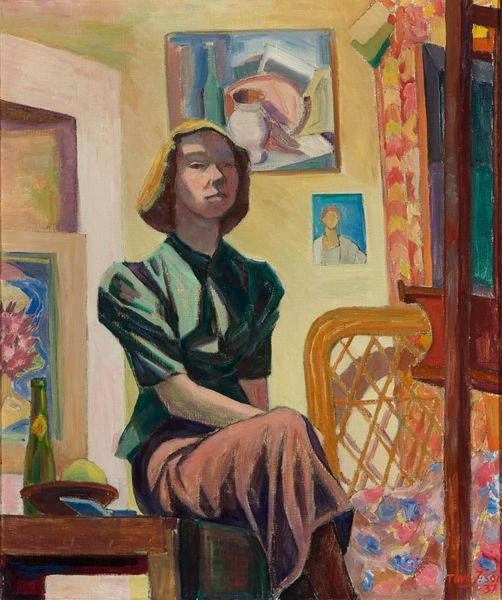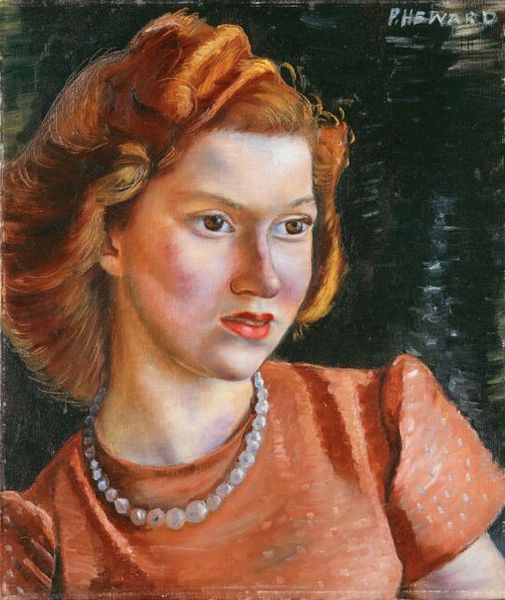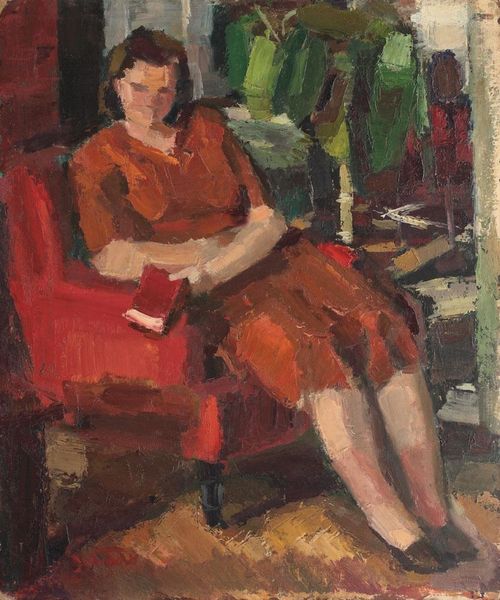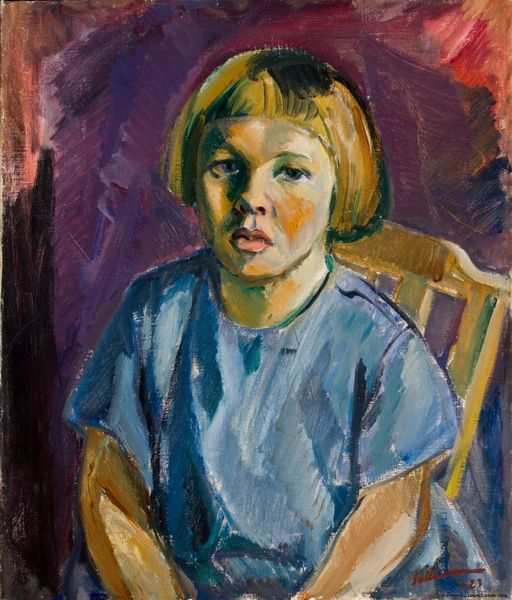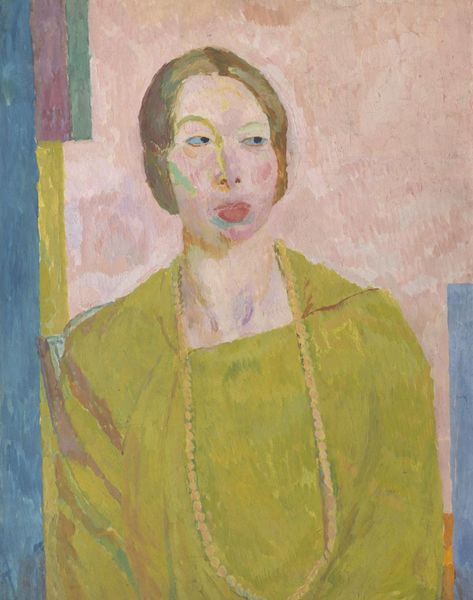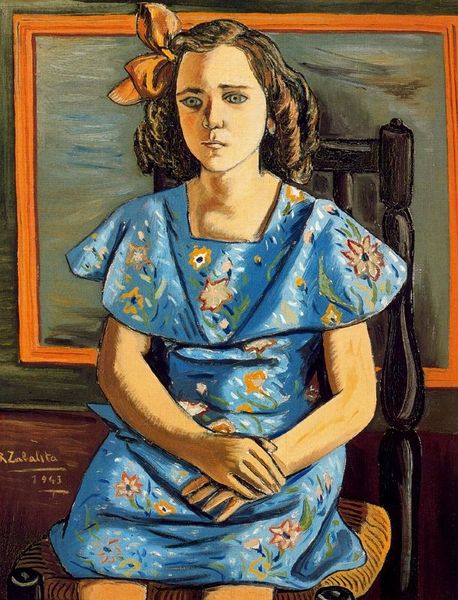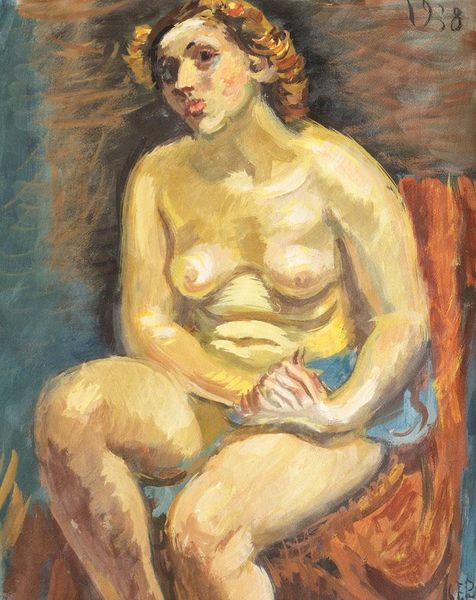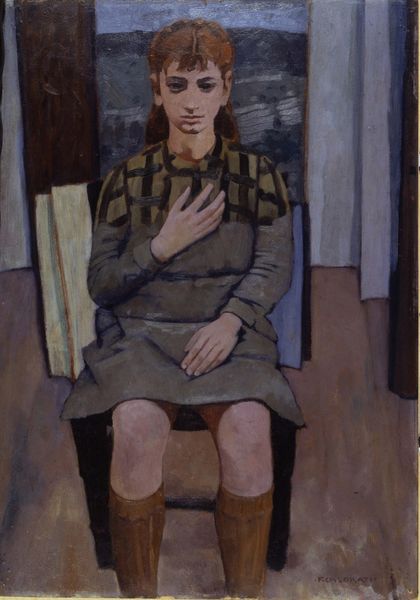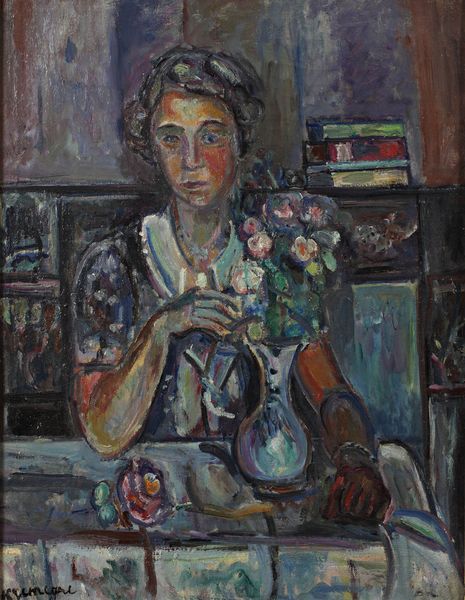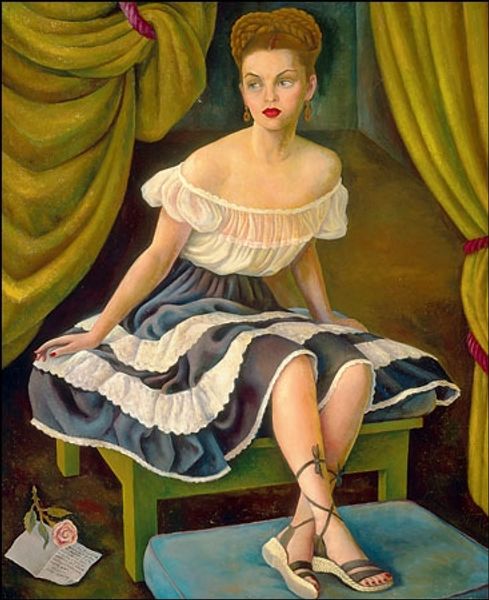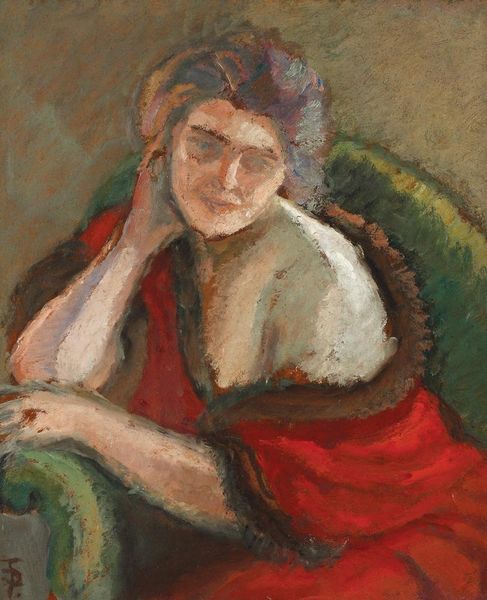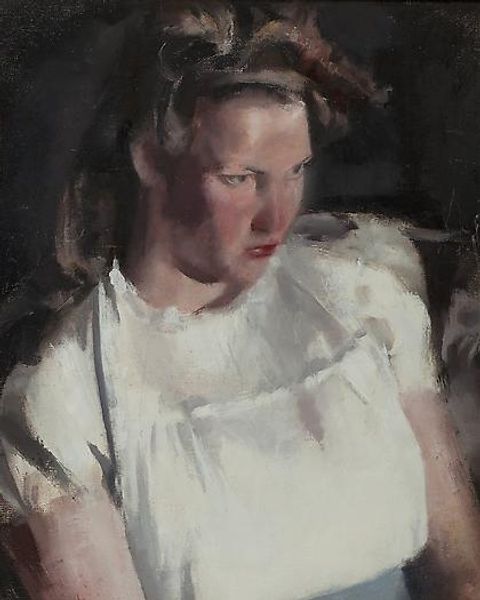
painting, oil-paint
#
portrait
#
painting
#
oil-paint
#
oil painting
#
genre-painting
#
portrait art
#
realism
Copyright: Public domain
Curator: Prudence Heward’s 1943 painting, “Portrait of Mrs. Zimmerman,” greets us with a quiet intensity. Made with oil paint, the painting feels intimate. Editor: Yes, there's a stillness to it. Mrs. Zimmerman seems caught in a moment of contemplation. The somewhat muted palette—greens, browns, creams—contributes to this subdued feeling. There's also a very slight tension created by the high contrast between her blond hair and the dark background. Curator: Considering Heward's career and the male-dominated art world of the time, it's compelling to see a female artist's perspective on another woman during the World War II era. The gaze of the sitter feels knowing, almost challenging the viewer to truly see her. Editor: Exactly! The period and her gender must be read here, and I find myself wanting to know more about Mrs. Zimmerman's life. Was she working during the war? How did she view the role of women in society? And considering the context, there is a somber quality, I am almost surprised her lips were made so vivid. Curator: It also highlights the complexities within depictions of femininity during this historical period. Here, Mrs. Zimmerman isn't objectified; she is the subject of her own story, or perhaps one might say that she challenges this story being made about her life by being still. It challenges conventional portraiture as mere aesthetics. Editor: The brushstrokes, while visible, are controlled and deliberate. Heward doesn’t shy away from portraying the sitter's perceived imperfections either, which speaks to her realistic approach and, as you said, places the woman firmly at the heart of the work, the active element. The space is secondary to her. It is only suggested as a means to focus more on Mrs. Zimmerman. Curator: Precisely. The setting almost recedes, directing all attention towards the woman, as you indicated. She's the center, demanding that her identity be understood beyond surface appearances, particularly when so much of the artistic milieu then reduced women to mere visual consumption. Editor: In all, the painting offers an enduring glimpse into one woman's life in a time of monumental change and turmoil, an image resisting what the external world does to people like her, and one made by a fellow artist aware of it all. Curator: I agree. “Portrait of Mrs. Zimmerman” invites a richer understanding of women's experiences during a critical period.
Comments
No comments
Be the first to comment and join the conversation on the ultimate creative platform.
